First, a Christmas memory …
Among the most successful events created by the Cacophony Society was the “Insane Claus Posse” aka “Santa Rampage” aka “SantaCon” aka “The Thick Red Line” aka “The Red Tide.” Hundreds of people dressed as Santa Claus and assuming the name Santa Claus would converge on a host city and participate in a weekend of stunts. From public caroling to crashing the private parties thrown by wealthy people to simply filling the streets with a sea of red velvet coats and pointed hats, the rampage was typical of the group’s events, among those is Burning Man. For Atomic Café, members were locked in the back of a tractor-trailer and driven to a derelict warehouse for a late-night potluck. For Le Art Mal, the group leased a failed gallery in an arts district filled with expensive galleries and created a one-night “show” of the worst art that could be found at local thrift stores. This took place on a “First Thursday” when all the neighboring galleries were launching new shows and art lovers walked the streets holding glasses of wine only to wander into the Cacophony’s crap art trap.
Each was a liminoid event. Some fizzled. Some became big parts of the cultural landscape. Nike has created television commercials based on the culture-jamming antics of Cacophony. Now Google and Facebook sponsor luxury camps for their employees at Burning Man.
In regard to Burning Man, the Cacophony Society created it in 1986. In 1990, it move to the Black Rock Desert in Northern Nevada …
Now, into The Zone …
From Tales of the San Francisco Cacophony Society: “… we left the road, driving directly onto the playa and stopped about 100 feet from the road. We all got out of our cars as one member drew a long line on the desert floor creating the ‘Zone gateway.’ This was one of our Cacophony rituals, for the Zone as we defined it took on many forms: it could be a weird house … a particularly strange neighborhood … Today it was The Black Rock Desert …”
To be in The Zone meant willing away your preconceptions and approaching a place with fresh eyes. As if you were a scientist or explorer from a distant planet experiencing the place with no cultural framework. In 1979 a novelty book called Motel of Mysteries documented a shabby roadside motel that had been unearthed by archeologists in the distant future. Those explorers imbued every ordinary detail—from light switches to bath mats—with enormous ritual and spiritual significance. A rotary-dial telephone, for example, was deemed to be a ceremonial tool for communicating with the gods. A console black-and-white television became a scrying glass for receiving visions of the future.
For a video synopsis of the book, look here.
In Motel of Mysteries, everything is looked at with a reverent profundity. Likewise, when going into The Zone, the explorers of the Cacophony Society trekked to the Nevada desert or to Covina, California and declared themselves such outsiders that they could collect and examine objects as if they were astronauts gathering rocks on the moon. They created short-lived liminoid events where they worshiped the concrete Cabazon Dinosaurs near Palm Springs,1 as well as the Watts Towers, and the Assyrian-motif gods cast into the concrete walls of the Sampson Tire & Rubber factory.
From Tales of the San Francisco Cacophony Society: “Our first arrival in The Zone happened at a gas station in L.A. County, somewhere just over the Grapevine. Driving all night, we took a moment for a pit stop. I noticed Astro-turf in the ‘garden’ area of the gas station. Moments later, I spotted a piece of car chrome, mangled and left … I had found the ‘key’ to The Zone. We drew a line in the dirty Astro-turf and held the key above our heads as we carefully stepped over the line and out of our real lives, willing ourselves to enter this alternative narrative …”
In effect, The Zone is not so much a place as it is a declaration. Do you remember my reference to how children could toss down boards and declare the ground around them was “lava”? Declaring The Zone seemed to be declaring that a place was special and deserving of intense examination. Imbuing every detail with a fresh, profound significance.
This strikes me as the same outsider spirit any artist must take in order to examine and reproduce the world. The way I had to shed my judgments about ugly vs. pretty in order to reproduce the dirt and rust of the real world on my model train buildings.
In the past, we had a physical frontier. People looking to prove themselves could go there. Misfits who couldn’t tolerate society could make lives on the frontier. Now that the physical frontier is settled or off-limits, a new frontier of subcultures seems to take its place. Call it new religions or cults or the Cacophony Society, it’s like-minded people who agree to discard a story and to adopt a new, shared idea about the world. Even if only for a few hours.
From Tales of the San Francisco Cacophony Society: “You could say that a lot of the events are like the experiences you’d have while taking drugs, but without the drugs. The events themselves make people look at things differently … Drugs were forbidden on events—in part because the event was supposed to produce ‘the trip,’ and in part to avoid hassles with the police.”
This self-exile seems to be the essence of being an artist. To declare that the world is not a set, finite place, and to not just invent a story, but to reinvent the world at the same time.
Look for more about the Cacophony Society in the future …
If you want to wander into The Zone in a plethora of ways, please…
Yes, as seen in the movie Pee-Wee’s Big Adventure.





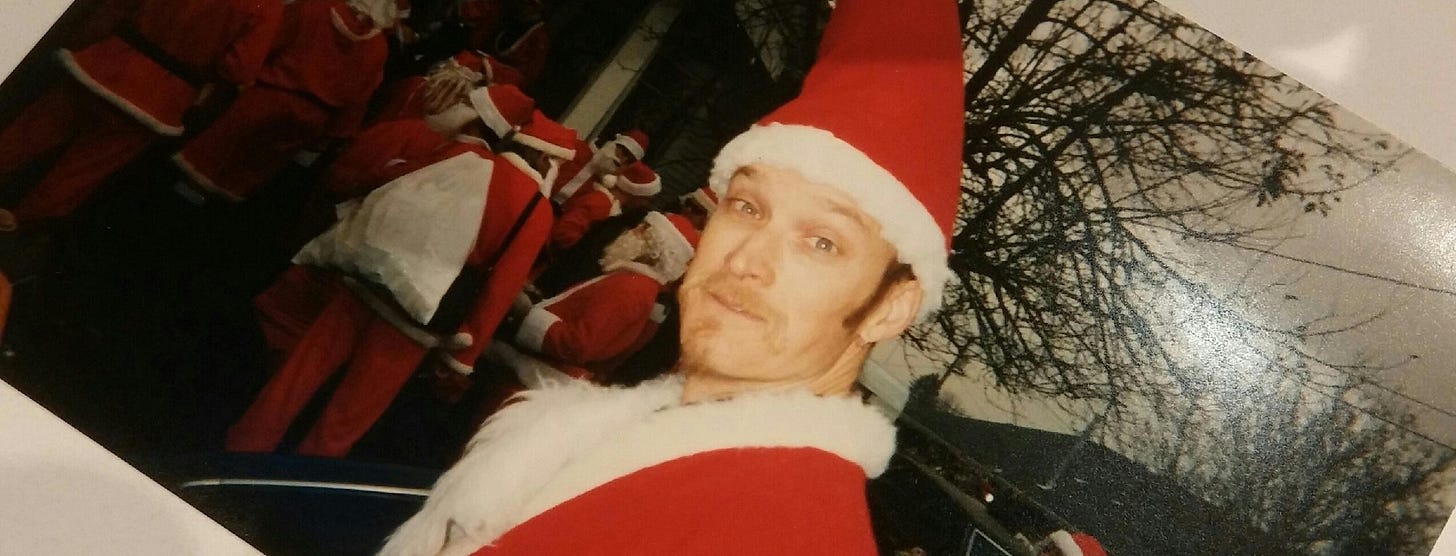

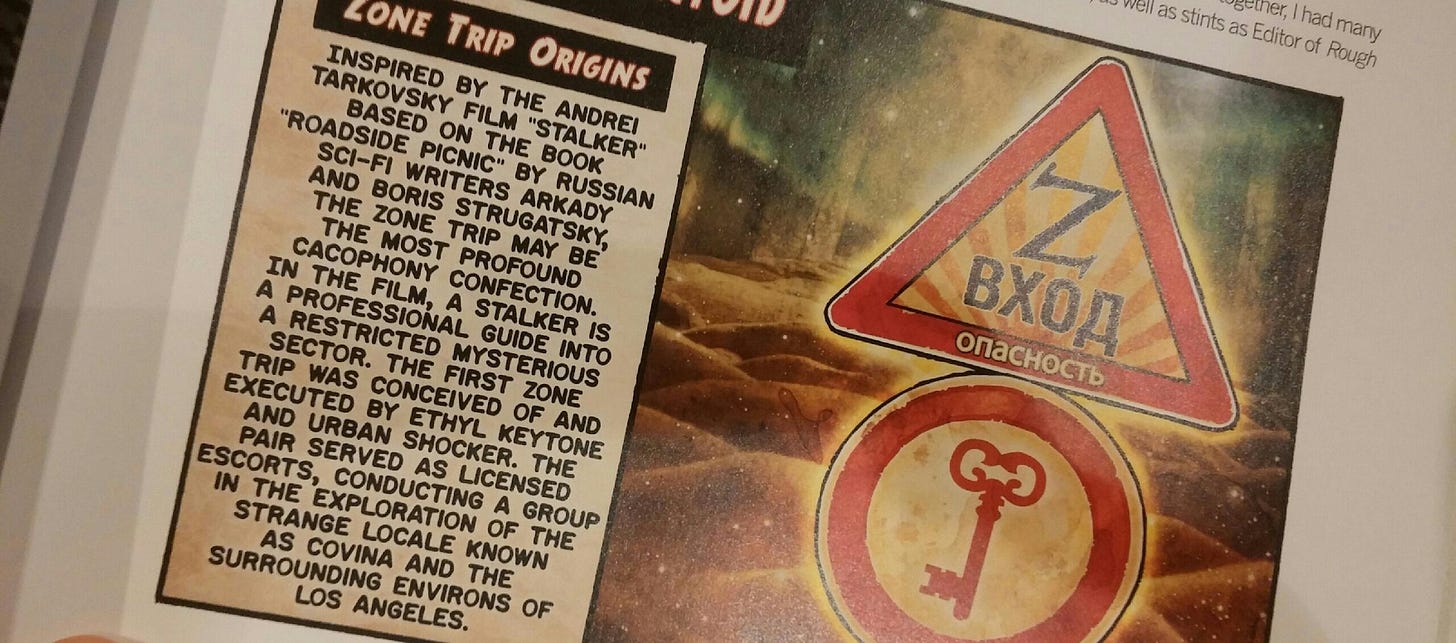
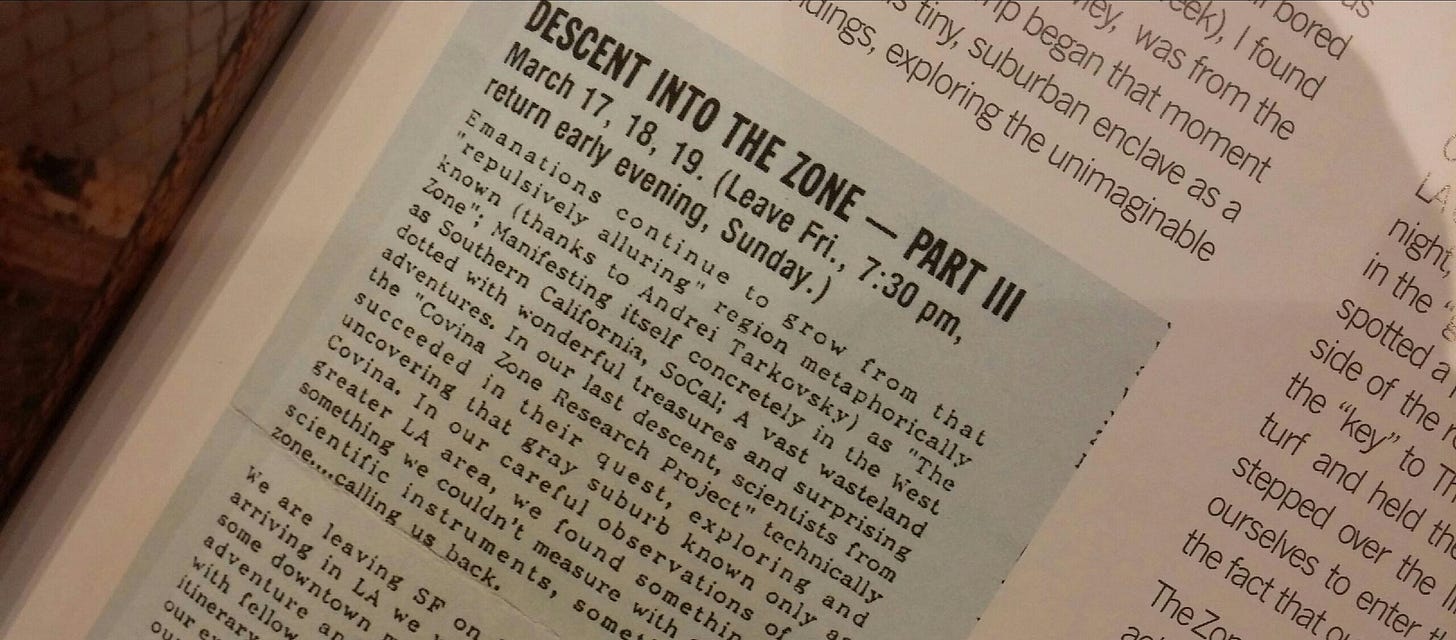
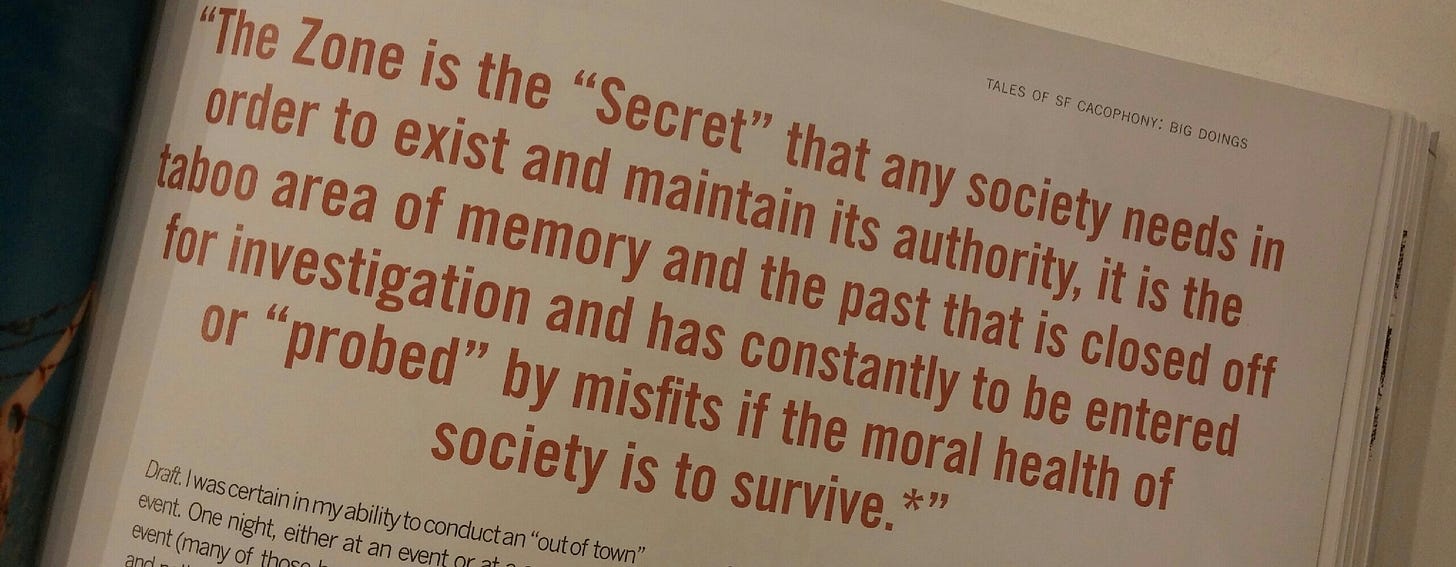

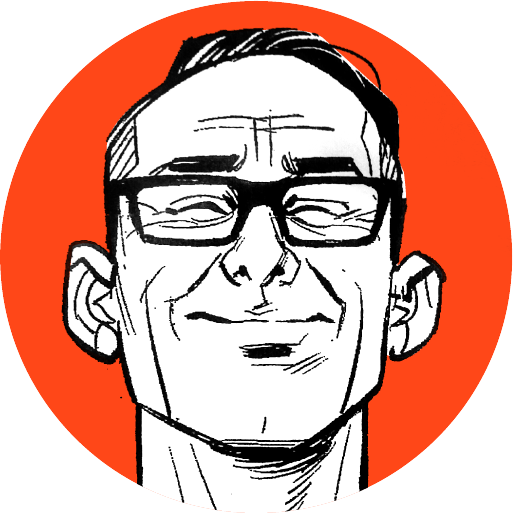
A circle I used to run with held an annual Santa pub crawl in downtown Toronto. I remember walking past a mother with her son, maybe around seven years old, and the kid in the whiniest kid voice imaginable said "They don' look like Santa!" To which the mother, visibly irate, replied "Those are just... Santa's helpers." There were like 40 of us, all shitfaced. Good times.
I started doing something similar when I started college. I majored anthropology. To alleviate my social anxiety, I started approaching everyday situations like a field anthropologist, just to feel a little removed.
What I found was that things I wouldn't have noticed before really stood out, which helped me with writing more detailed scenes and believable characters.
There's a book called "Magic, Witchcraft, and Religion: an Anthropological Study of the Supernatural" that might be of interest. I think that's where I read the article by a bored archeologist imagining future archeologists trying to suss out the purpose of the bathroom.